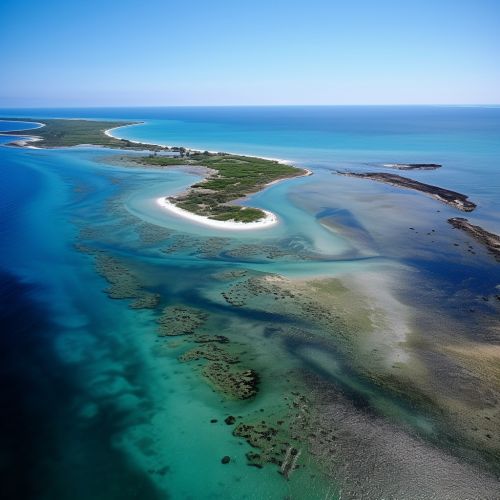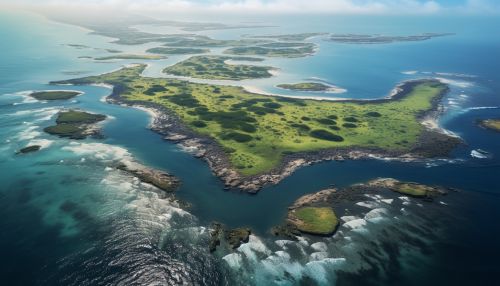The Dynamics of Barrier Island Formation and Stability
Introduction
Barrier islands are elongated, narrow, sandy landforms that run parallel to the mainland coast, separated from it by a lagoon or bay. They are dynamic systems, constantly changing in response to waves, tides, and currents, as well as sea-level changes and human activities. Understanding the dynamics of barrier island formation and stability is crucial for coastal management and conservation.


Formation of Barrier Islands
Barrier islands are formed through a complex process involving sediment deposition, wave action, and sea-level changes. The primary source of sediment for barrier island formation is the continental shelf, which is eroded by waves and currents. These sediments are then transported and deposited along the coast, forming a barrier island.
Sediment Deposition
The initial stage of barrier island formation involves the deposition of sediments along the coast. This process is largely driven by longshore drift, a phenomenon where waves approaching the coast at an angle cause sediments to move in a zigzag pattern along the beach. Over time, this leads to the accumulation of a long, narrow ridge of sand parallel to the coast, known as a barrier spit. With continued sediment deposition, the barrier spit can extend and eventually disconnect from the mainland, forming a barrier island.
Wave Action
Wave action plays a crucial role in shaping barrier islands. Waves erode the seaward side of the island, transporting sand towards the lagoon side. This process, known as overwash, can lead to the landward migration of the barrier island. Moreover, wave action can create dunes on the island, which serve as a natural defense against storm surges and sea-level rise.
Sea-Level Changes
Changes in sea level, whether due to tectonic activity or climate change, can significantly impact barrier island formation and evolution. Rising sea levels can drown barrier islands, while falling sea levels can lead to their growth and expansion. During periods of stable sea level, barrier islands can become stabilized by vegetation, which helps to trap and accumulate sand.
Stability of Barrier Islands
The stability of barrier islands is influenced by a range of factors, including sediment supply, wave energy, sea-level changes, and human activities. These factors can interact in complex ways, leading to a dynamic equilibrium where the island's shape and position change over time, but its overall form remains stable.
Sediment Supply
Adequate sediment supply is crucial for the stability of barrier islands. Sediments replenish the island's sand budget, compensating for losses due to erosion and overwash. If sediment supply is reduced, for example due to human activities such as dam construction or beach nourishment, the island can become unstable and may eventually disappear.
Wave Energy
The energy of waves hitting the island can affect its stability. High-energy waves can cause significant erosion, leading to island narrowing or breaching. On the other hand, low-energy waves can promote sediment deposition and island growth. The wave energy is influenced by factors such as storm frequency and intensity, as well as the shape and depth of the offshore bathymetry.
Sea-Level Changes
As mentioned earlier, sea-level changes can have a significant impact on barrier island stability. Rising sea levels can lead to increased overwash and island migration, while falling sea levels can promote island growth. In the context of climate change, sea-level rise is a major concern for the stability of barrier islands.
Human Activities
Human activities can greatly influence the stability of barrier islands. Coastal development can disrupt natural processes, leading to increased erosion and island instability. Moreover, structures such as seawalls and groins can interfere with sediment transport, reducing the sand supply to the island. On the other hand, conservation measures such as dune restoration and vegetation planting can enhance island stability.
Conclusion
Barrier islands are dynamic landforms that play a crucial role in coastal ecosystems and human societies. Understanding the dynamics of their formation and stability is essential for their management and conservation. While these processes are complex and influenced by a range of factors, ongoing research continues to improve our understanding and ability to predict future changes.
